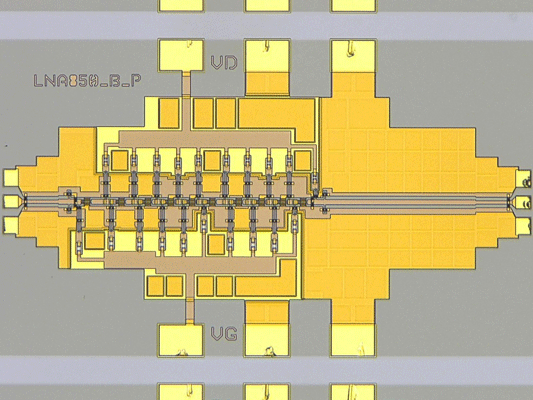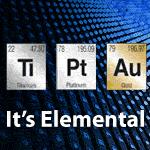- News
1 August 2012
Northrop Grumman demos record 850GHz integrated receiver
US defense contractor Northrop Grumman Corp has demonstrated an 850GHz integrated receiver that brings the firm much closer to being first to reach a US Department of Defense goal for developing transistor-based electronics that can operate at center frequencies beyond 1 terahertz (THz).

Under Phase 2 of the Defense Advanced Research Project Agency's (DARPA’s) Terahertz Electronics program, company engineers report that they have scaled the frequency to a record 850GHz. Under Phase 1, in 2010 they developed a Terahertz monolithic integrated circuit that operated at 670GHz.
“Integrated circuits operating at frequencies past 1THz will enable submillimeter-wave technology for covert, small-aperture communications, high-resolution imaging and leap-ahead advancements in explosive detection spectroscopy,” says Dr William Deal, Terahertz Electronics program manager for Northrop Grumman’s Aerospace Systems sector. “This unprecedented increase in integrated circuit operating speed is especially important for emerging applications in military communications and radar,” he adds. “The amplifiers and receivers we are demonstrating will enable more sensitive radar and produce sensors with highly improved resolution.”
In addition to demonstrating low-noise integrated receivers under the DARPA program, the firm has developed and tested low-noise amplifiers and power amplifiers. "Success in the initial phase led to a $12.5m contract, bringing the total value of the program to $28m,” Deal notes.
The goal of DARPA’s Terahertz Electronics program is to develop the critical device and integration technologies necessary to realize compact, high-performance electronic circuits that operate at center frequencies exceeding 1THz. The program focuses on two areas: THz high-power amplifier modules and THz transistor electronics.
“The ability to coherently process signals at 0.85THz provides a means to generate and radiate the high-frequency signals needed for applications such as DARPA’s Video Synthetic Aperture Radar (ViSAR) program,” says DARPA program manager John Albrecht. “VISAR seeks to develop and demonstrate a targeting sensor which operates through clouds as effectively as today’s infrared (IR) sensors operate in clear weather,” he adds. “This revolutionary advance would give US warfighters an advantage in an especially challenging portion of the RF spectrum.”
Northrop Grumman Integrated receiver



